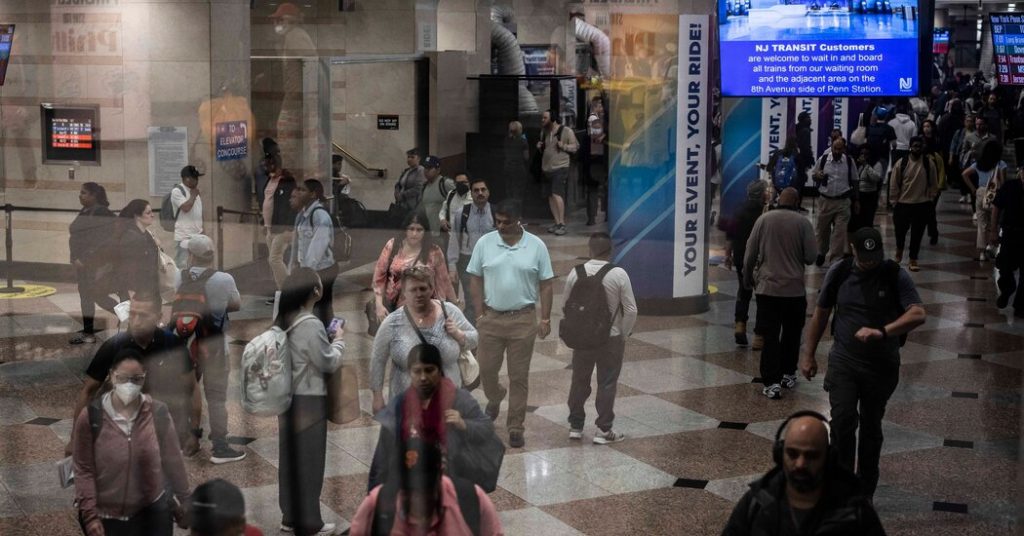A major transportation disruption occurred on the evening rush hour in Kearny, New Jersey, when an overhead wire that transmits traffic signals fell and struck a cable providing electrical power to trains on Amtrak’s Northeast Corridor. This caused service to be halted on Amtrak and New Jersey Transit trains between Pennsylvania Station in Manhattan and Newark, affecting passengers throughout the region. The delays lasted over four hours, leading many commuters to turn to ride-hailing services to get home. The disruption was finally resolved after 10 p.m., but residual effects were felt into the following morning’s commute.
The cause of the wire break was still unknown, but experts attribute these issues to decades of underinvestment in the transportation system. Amtrak, in particular, has suffered from lack of sufficient federal funding for maintenance and improvements. With recent funding from the Biden administration, Amtrak has been working on upgrading infrastructure along the Northeast Corridor, but many believe that more needs to be done to prevent future disruptions. The ongoing Gateway project, which aims to eliminate bottlenecks and add a two-track tunnel under the Hudson, is a step in the right direction, but it will take years to complete.
The relationship between Amtrak and New Jersey Transit is complicated, as Amtrak owns the busiest segment of rail lines connecting New Jersey to New York City. This means that New Jersey Transit passengers are often at Amtrak’s mercy, as they rely on Amtrak infrastructure to access Manhattan. Several weak links, including the Portal Bridge, contribute to delays and disruptions for commuters. Governor Phil Murphy of New Jersey has expressed frustration with Amtrak’s infrastructure challenges, demanding more investment in improvements and emergency management plans to prevent incidents like the recent disruption.
While there are alternative transit options like the Hoboken terminal and PATH trains, the situation highlights the need for long-term solutions to prevent frequent transportation disruptions. Previous projects like a second rail tunnel under the Hudson were canceled due to cost concerns, but the Gateway project aims to address capacity issues across the Hudson and at Penn Station. With federal funding support, this project could significantly improve transportation infrastructure in the region, including replacing aging bridges and adding tracks to alleviate congestion.
The Gateway Development Commission is currently seeking federal funding to cover half of the project’s estimated $16 billion cost, with New Jersey and New York agreeing to split the remaining cost. Once completed, the new tunnel would allow Amtrak to conduct comprehensive repairs on outdated infrastructure, such as the existing century-old Hudson tunnel. Experts agree that projects like Gateway are necessary to avoid future transportation failures and maintain the efficiency and reliability of the transportation system in the region. Despite the challenges faced during the recent disruption, commuters and officials alike remain hopeful that long-term solutions will be implemented to prevent similar incidents in the future.








